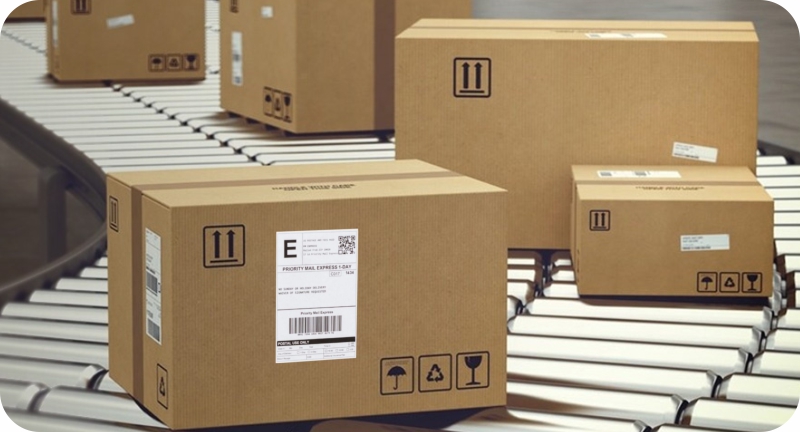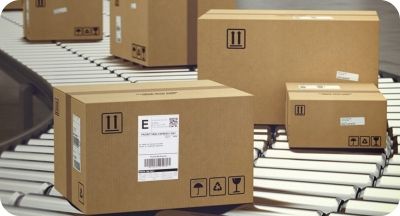Date: 03 Jun 2020

A logistic label is any standardized label for product, shipment and pallet labeling and identification. Using the label, the logistic unit can be traced throughout the supply chain - from the production process until it reaches the hands of the end customer.
Dilcom Bulgaria's labeling systems generate shipping labels containing permanent and variable data with high print quality. The logistics labels we produce effectively facilitate track and trace product processes and cross docking. They are suitable for small, medium and major carriers.
The choice of the right label material for the production of a logistic label depends on the storage and transportation conditions. It is also based on the label application method - adhesive or non adhesive.
Adhesive labels are the most popular choice in the logistics industry. A wide range of materials and adhesives is available for their production. They must be carefully selected, depending on the conditions under which the shipping label will be used.
When using reusable packaging, the adhesive label is not suitable for practical and aesthetic point of view, as it remains adhesive when removed. In this case non adhesive cardboard or foil labels with a suitable shape are recommended, that are placed in a specific place.
A simpler solution is to use adhesive circles from Duct tape, with which the shipping label is attached to the logistics unit.
Logistic adhesive labels can be made of paper or foil. In most cases, due to the lower price, paper adhesive labels are preferred by customers. There are two types – direct thermal labels used mainly for short-term markings and thermal transfer labels which are printed with thermal transfer ribbon.
The barcode, printed on thermal transfer labels, is long-lasting and products labeled with thermal transfer labels can be stored in warehouses for a very long time.
Paper labels are not suitable when the product or pallet is exposed to external weather conditions.
In this case we recommend the use of foil labels: polyester labels, PPE or PE. They are most often used in the construction industry, as products are stored outdoors.
When choosing a print shipping label, the right adhesive also plays a huge role in ensuring the correct adhesion of the label to the surface and its resistance and durability.
Logistic RFID tags are gaining more and more popularity, despite the higher price.
Barcode systems use an optical scanner in order to read the barcode. Unlike them, RFID systems use radio waves to read data from a chip known as an RFID tag. The RFID technology offers much more advantages than the barcode technology.
Dilcom also prints logistics labels gs1, according to GS1 standards. The GS1 standard ensures the necessary quality and technical parameters of shipping labels. Every logistics label consists of three sections, comprising a type of label template. The three sections include free format information, text data and barcodes.
If you do not properly select the most suitable material for your logistics labels, that can lead to certain issues. Such can be illegible barcodes, unwanted detachment of the label from the product and unexpected costs from interruptions in the logistic process.
Dilcom considers each customer’s request individually and creates shipping labels depending on the specific needs of the business. You can order your logistics labels online or by emailing our team of specialists at sales@dilcom.com.


Post comment